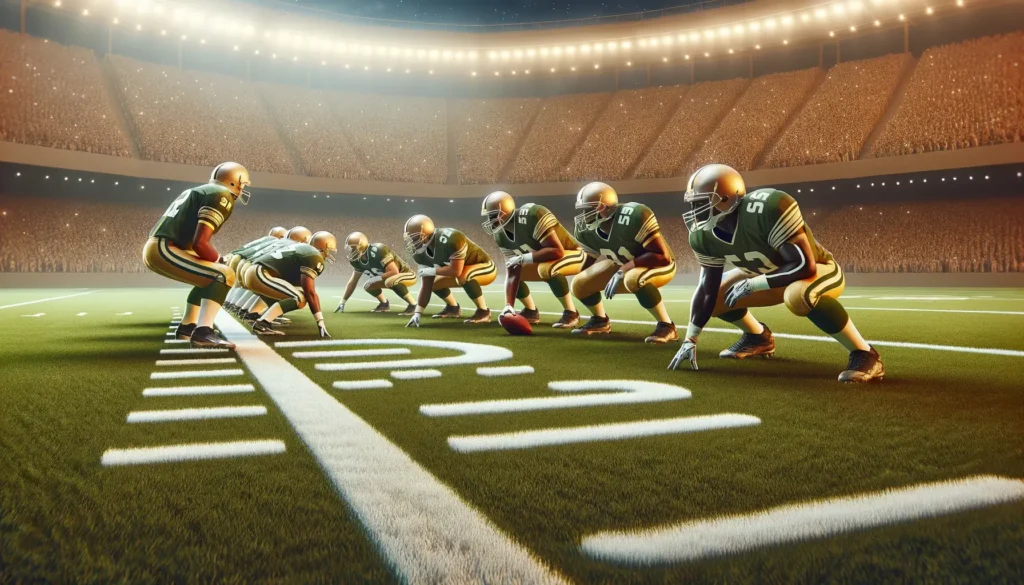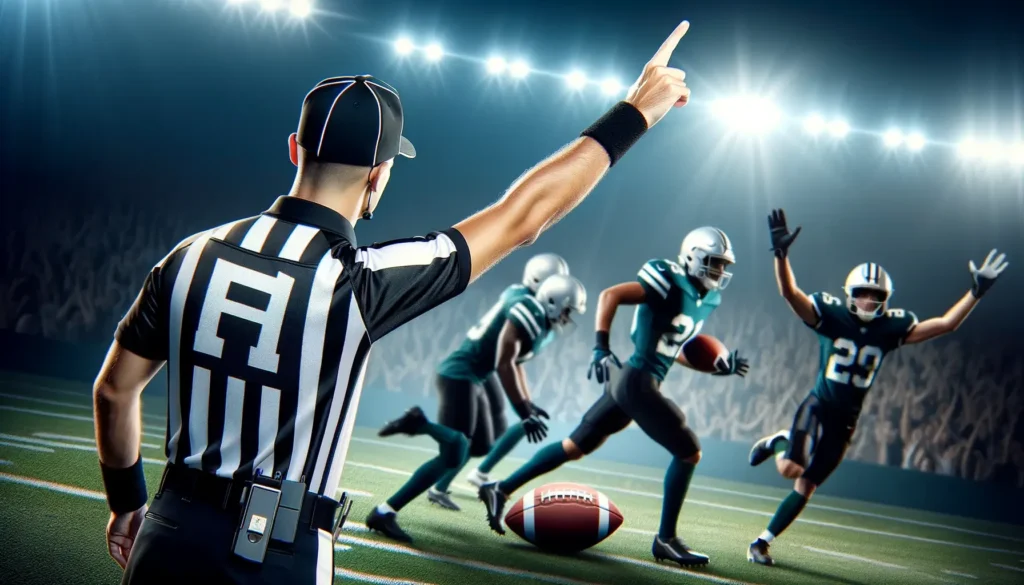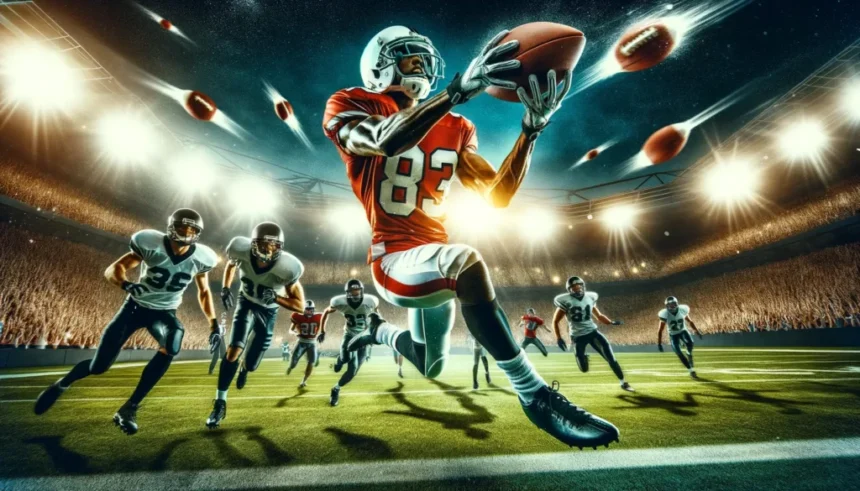Football, especially American football, has many exciting plays and moments, but one of the key elements of the game is the reception. What is a Reception in Football? A reception is a fundamental part of football that plays a big role in the sport, especially in the NFL. This article will explain what a reception is, why it is important, how it works, and what makes it such an essential part of football. Whether you are a long-time fan or new to the game, understanding receptions will help you enjoy and appreciate football even more.
What is a Reception in Football?
A reception in football happens when a player, usually a receiver, catches a forward pass from the quarterback. This is not just about catching the ball; it is a critical part of the team’s strategy to move the ball closer to the opponent’s end zone and score points. For a reception to be successful, the receiver must catch the ball, keep control of it, and stay within the field’s boundaries. This requires skill, speed, and a good understanding of the game.
Key Points About Receptions:
- Receiver Catches the Ball: The player must catch a forward pass from the quarterback.
- Stays In Bounds: The receiver must be inside the playing field when making the catch.
- Maintains Control: The player must control the ball even if they fall to the ground.
The Role of the Receiver in Football
Receivers are the players who usually catch the passes. There are two main types of receivers: wide receivers and tight ends.
Wide Receivers:
- Speed and Agility: Wide receivers are fast and agile, able to run quickly and change direction to avoid defenders.
- Route Running: They run specific routes, which are pre-planned paths, to get open for the pass.
Tight Ends:
- Versatile Players: Tight ends are bigger and stronger, often playing near the line of scrimmage.
- Blocking and Catching: They help block the defense and also catch passes, making them very valuable.
Both types of receivers need to understand the defense, adjust their routes, and work closely with the quarterback to be successful.

The Importance of Teamwork:
- Practice and Experience: The connection between the quarterback and receivers is built through lots of practice.
- Non-Verbal Communication: They develop an understanding that helps them know what each other will do during a play.
Read More: What is a TFL in Football? Understanding Tackles for Loss
Quarterback to Receiver: The Dynamics of a Successful Pass
The quarterback’s job is to throw the ball accurately and on time to the receiver. This involves a lot of skills and quick thinking.
Key Responsibilities of the Quarterback:
- Reading the Defense: Understanding where the defenders are and what they might do.
- Timing: Throwing the ball at the right moment when the receiver is ready.
- Accuracy: Making sure the pass is easy for the receiver to catch.
A successful pass depends on the quarterback’s ability to read the game and the receiver’s ability to catch and control the ball.
Types of Reception in Football: From Short Passes to Downfield Thrillers
Receptions can vary greatly depending on the situation and strategy. Here are some common types:
Short Passes:
- Screen Passes: Quick passes to a receiver behind the line of scrimmage.
- Slant Routes: Short, quick passes where the receiver runs a diagonal route.
Downfield Passes:
- Deep Throws: Long passes aimed at covering a lot of ground quickly.
- Post and Corner Routes: The receiver runs deeper routes, aiming to get behind the defenders.
The type of pass chosen depends on what the team needs to do, the strengths of the players, and the situation in the game.
The Rules Surrounding Receptions: What Counts and What Doesn’t?
There are specific rules to ensure a reception is fair and valid.
Important Rules:
- Complete Control: The receiver must have control of the ball without it touching the ground.
- In Bounds: The receiver must be inside the field when they catch the ball.
- Maintaining Control: Even if they fall, they must keep control of the ball.
These rules help make sure that receptions are clear and fair, which is crucial in close games.
Receptions in Different Football Leagues: Are There Variations?
While the basic idea of a reception is the same, different leagues might have slight variations in the rules.
NFL vs. College Football:
- NFL: Has very strict rules about control and staying in bounds.
- College Football: Similar rules, but sometimes there are differences in how the catch is judged.
Understanding these differences is important for fans and players who follow different levels of football.
Famous Reception Plays in Football History
Some receptions are so incredible that they become legendary moments in football history. These plays are remembered and talked about for years.
Examples of Famous Receptions:
- The Catch: A famous touchdown catch by Dwight Clark of the San Francisco 49ers in 1982.
- Hail Mary: Long, last-second throws that result in a game-winning touchdown.
These memorable receptions show how exciting and important these plays can be in football.
Techniques and Drills
To become good at receptions, players practice a lot. They use different drills to improve their skills.
Common Drills:
- Hand-Eye Coordination: Drills that help players catch the ball consistently.
- Route Running: Practicing the exact routes they will run in games.
- Game Simulation: Simulating game situations to practice under realistic conditions.
These drills help players get better at making successful receptions.
Analyzing Statistics: What Do They Tell Us?
Reception statistics help understand how well players and teams are performing. Key stats include:
Key Statistics:
- Number of Receptions: How many passes a player catches.
- Receiving Yards: Total yards gained from receptions.
- Touchdowns: How many times a player scores from a reception in football.
These statistics help coaches and analysts evaluate players and plan strategies.

The Future of Receptions in Football: Evolving Strategies and Trends
As football evolves, so do the strategies and techniques around reception in football. New technologies, training methods, and rule changes continue to shape how receptions are performed and understood.
Future Trends:
- Advanced Analytics: Using data to improve player performance and game strategies.
- Training Innovations: New training methods to enhance player skills.
- Changing Rules: Adapting to new rules and understanding their impact on the game.
The future will likely bring new ways to look at and improve reception in football.
Conclusion – What is a Reception in Football
Receptions are a fundamental part of football, playing a crucial role in the game’s strategy and excitement. From the quarterback’s throw to the receiver’s catch, every reception involves skill, teamwork, and quick thinking. Understanding receptions helps appreciate the complexity and beauty of football.
FAQs
What is Behind the Line of Scrimmage?
Plays start behind the line of scrimmage, marking the beginning of an offensive play. It’s essential for strategies and determines the quarterback’s actions, including handoffs to running backs.
What Does a Running Back Do?
A running back primarily runs with the ball, aiming to breach defenses and advance downfield. They’re pivotal in both running and passing plays, maneuvering through tackles to gain yardage.
Is There a World Cup in Football?
Unlike soccer, American football doesn’t have a World Cup. The sport’s premier event is the NFL Super Bowl, where top teams contend for the championship, focusing more on league-based rather than international competition.
Understanding receptions gives you a deeper appreciation of football, highlighting the skill and strategy involved in this exciting sport.




